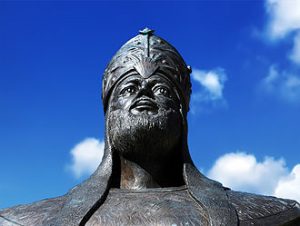Santiago de Compostela
Because my wife is from the province of Asturias in the north of Spain, we’ve regularly visited that part of the world, and I’ve always wanted to set a story there.
Although I’m an atheist, I’ve always been fascinated by the stories, myths and legends associated with the various faith systems. In particular, the legend that St James the Apostle visited what is now Galicia in Spain’s far northwest caught my interest.
The city of Santiago de Compostela is home to a magnificent cathedral. It’s one of those buildings that, even if your not a believer, it inspires a sense of wonder.
The first part of the city’s name, Santiago, is a Galician variation of the Latin “Sanctus Iacobus” or Saint James.
There are a couple of stories about the origin of the the rest of the city’s name.
One version, not so romantic, is that Compostela is a Galician version of the Latin phrase, “Composita Tella” which means “burial ground”. It’s held that the site was once a Roman cemetery.
Like I said, not so romantic.
But the other version is much more fun.
There’s a legend in Galicia that one night, almost a thousand years ago, a shepherd watching over his flock, followed a bright light in the sky that led him to where Saint James was buried. He told the local bishop, named Teodomiro, who immediately confirmed that the remains were genuine and so notified King Alphonso in Oviedo, the then capital of the kingdom. Today, Oviedo is the capital of the province of Asturias.
The king could see an opportunity when it was put in front of him and ordered that a cathedral be built on the site to house the saint’s remains. (Perhaps we should keep in mind that while there wasn’t much scientific method back then, they did understand the value of a tourist attraction. Some things never change.)
Within a few years, pilgrims began to walk the trail across the North of Spain. In the centuries following, several routes developed, one down through France, another from Northern and central Europe and another from Italy.
It was a dangerous journey. Slavers, wolves, bandits and bad weather were a constant threat.
Even today, the pilgrimage to Santiago de Compostela attracts walkers from all over the world. Last year, some 60,000 people walked the trail.
Spaniards call the pilgrimage, El Camino, which means, The Way.
Here are some links to sites about El Camino:
http://santiago-compostela.net/
Dominionists
Dominionism is an actual thing. They’re fundamentalist Christians who believe that America is a Christian nation, for which God has a specific plan.
That plan is to guide America to first become a Theocracy, then to conquer the world imposing their brand of Christianity as they go, and when that’s done, the Second Coming will eventuate.
Hmm!
The movement is actually quite influential in Washington DC, which I for one, find just a tad scary.
Here’s some links:
http://rationalwiki.org/wiki/Dominionism
The Moors
Here is a terrific explanation of the Moorish empire in Spain, far better than anything I could put together.
https://en.wikipedia.org/wiki/Moors

Al Mansur
Al Mansur was a real person. When the Caliph of the Court of Cordoba, Al Hakam 11 died in 976 AD, he became regent for the heir, Hisham 11, but he arranged matters so that Hisham stayed in the background and Al Manur permanently ruled in Cordoba.
In 997 AD, his army sacked Santiago de Compostela and took the cathedral’s great bells back to Cordoba to be melted down and turned into candelabras to light Cordoba’s Great Mosque.
The scene where he encounters the Bishop of Santiago praying in the square of the sacked city, before the ruins of the cathedral, is based on a popular legend.
Al Mansur was a brilliant strategist, a highly competent administrator but a ruthless ruler.